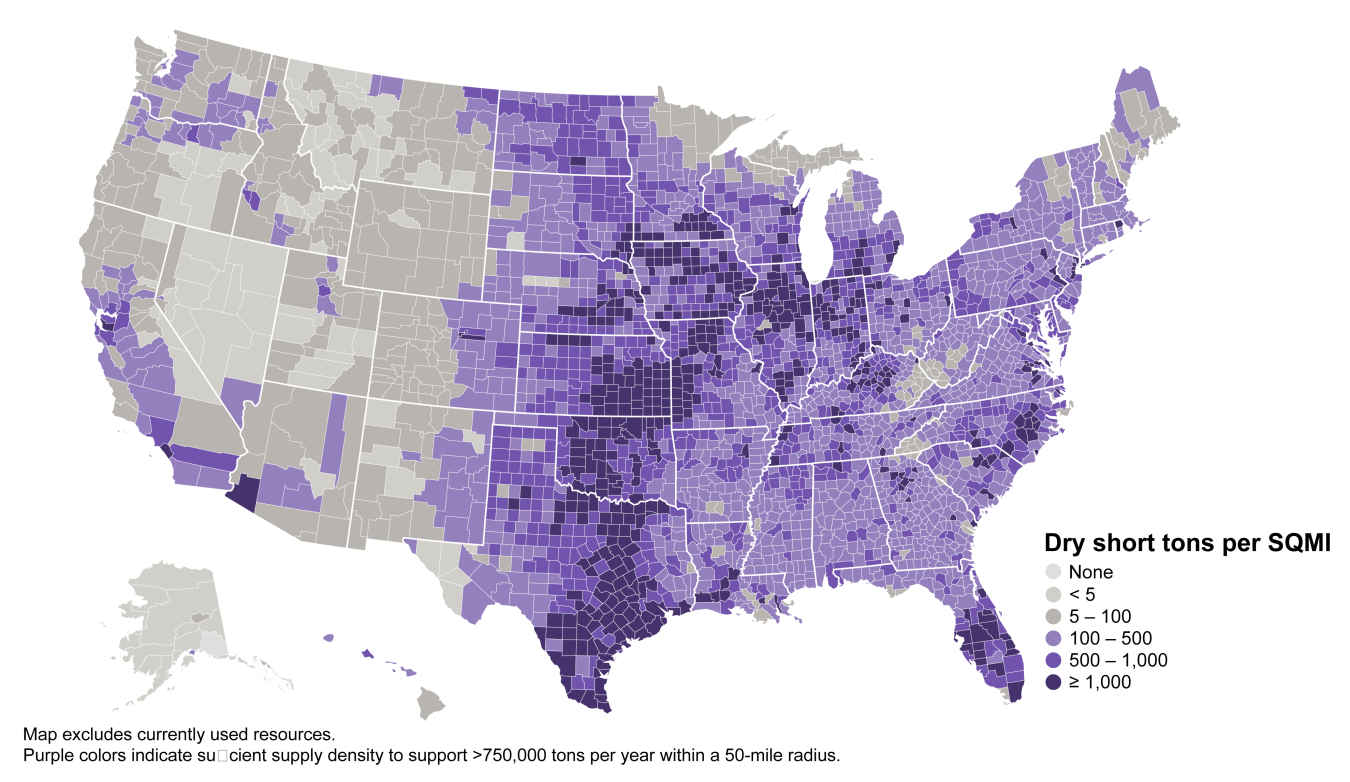Stakeholders, such as farmers, industry, and local, regional, and national planners, have a powerful, free, and easy-to-access data portal at their command to unlock the power of bioenergy: the U.S. Department of Energy’s (DOE’s) Bioenergy Knowledge Discovery Framework, or BioenergyKDF. The portal, stewarded by Oak Ridge National Laboratory (ORNL) for DOE’s Bioenergy Technologies Office, is the nation’s premier source of information on biomass potential, providing high-quality data that can guide investments in support of a robust bioeconomy for sustainable, low-carbon energy sources.
August 29, 2024

Stakeholders, such as farmers, industry, and local, regional, and national planners, have a powerful, free, and easy-to-access data portal at their command to unlock the power of bioenergy: the U.S. Department of Energy’s (DOE’s) Bioenergy Knowledge Discovery Framework, or BioenergyKDF. The portal, stewarded by Oak Ridge National Laboratory (ORNL) for DOE’s Bioenergy Technologies Office (BETO), is the nation’s premier source of information on biomass potential, providing high-quality data that can guide investments in support of a robust bioeconomy for sustainable, low-carbon energy sources.
The BioenergyKDF is home to DOE’s 2023 Billion-Ton Report (BT23) series and its treasure trove of information, including the latest 2023 report and associated data. BT23 reveals that in a mature market, the United States could produce between 1.1 and 1.5 billion tons/year of biomass for bioenergy production. That mature-market production level would triple the current U.S. bioeconomy, while still meeting projected demand for food, fiber, exports, and conventional forest products.
The BioenergyKDF provides data showing that even in the near term, some 350 million tons/year of biomass is available above current uses, which would roughly double the current bioeconomy. This “low-hanging fruit” of the biomass portfolio includes biomass resources that exist today, even in the absence of additional market pull for biomass and are currently unused. Some of these resources, such as wastes, are already collected but then landfilled. Others, such as agricultural residues and timberland resources, exist in fields and forests but must be collected for use.
The BioenergyKDF’s easy-to-use tools include maps for every county in the nation, providing detailed potential biomass opportunities, with modeled resources reflecting local conditions and evolving technologies. The site also provides reports on state-of-technology assessments, technology design pathway analyses, life-cycle assessments, techno-economic analyses, a supply-chain analysis, and the latest on DOE-sponsored bioenergy research across the country.
Using modern data principles, the BioenergyKDF makes it easy to find and access these important data. The portal provides key information about the data to ensure it follows principles for findability, accessibility, interoperability, and reusability—ensuring access by users. The result is an intuitive, open-source platform designed for industry professionals, policymakers, researchers, and agricultural and other stakeholders.
Entrepreneurs, who are targeting new inventions and implementing patented processes, are utilizing the BioenergyKDF datasets to inform their business decisions. One such user is targeting utilization of biomass to combat climate change and provide other environmental services, creating new bioeconomy jobs and climate-smart bioproducts made from biomass sorghum.
Other entrepreneurs are targeting waste biomass identified as available from agricultural products such as cotton gin residues. Another is exploring connecting biomass suppliers with developing biomass users. In each case, these users relied on BT23 data portal as a go-to resource for biomass availability in a growing bioeconomy.
Tripling the nation’s bioeconomy can cover about 15% of U.S. energy needs in the future, according to the latest BioenergyKDF data from BT23. Producing 1.1 to 1.5 billion tons of biomass would supply some 60 billion gallons of renewable carbon liquid fuel. That level would more than satisfy the nation’s projected demand for sustainable aviation fuel and furnish clean fuel for renewable electricity generation and other applications.
The BioenergyKDF provides the latest data, trends, and analytical tools in bioenergy development, empowering users to make informed, data-based decisions and investments to boost the nation’s bioeconomy and clean energy goals.
Need Help Accessing the BioenergyKDF Data Portal?
An informational video is available to illustrate how to access the resources from BT23 using the Bioenergy KDF data portal. Maggie Davis, Research and Development Scientist at ORNL, demonstrates how to use the vast collection of tools and data on the online platform.
Dr. Erin Webb is Laboratory Relationship Manager for the DOE Bioenergy Technologies Office at Oak Ridge National Laboratory.

